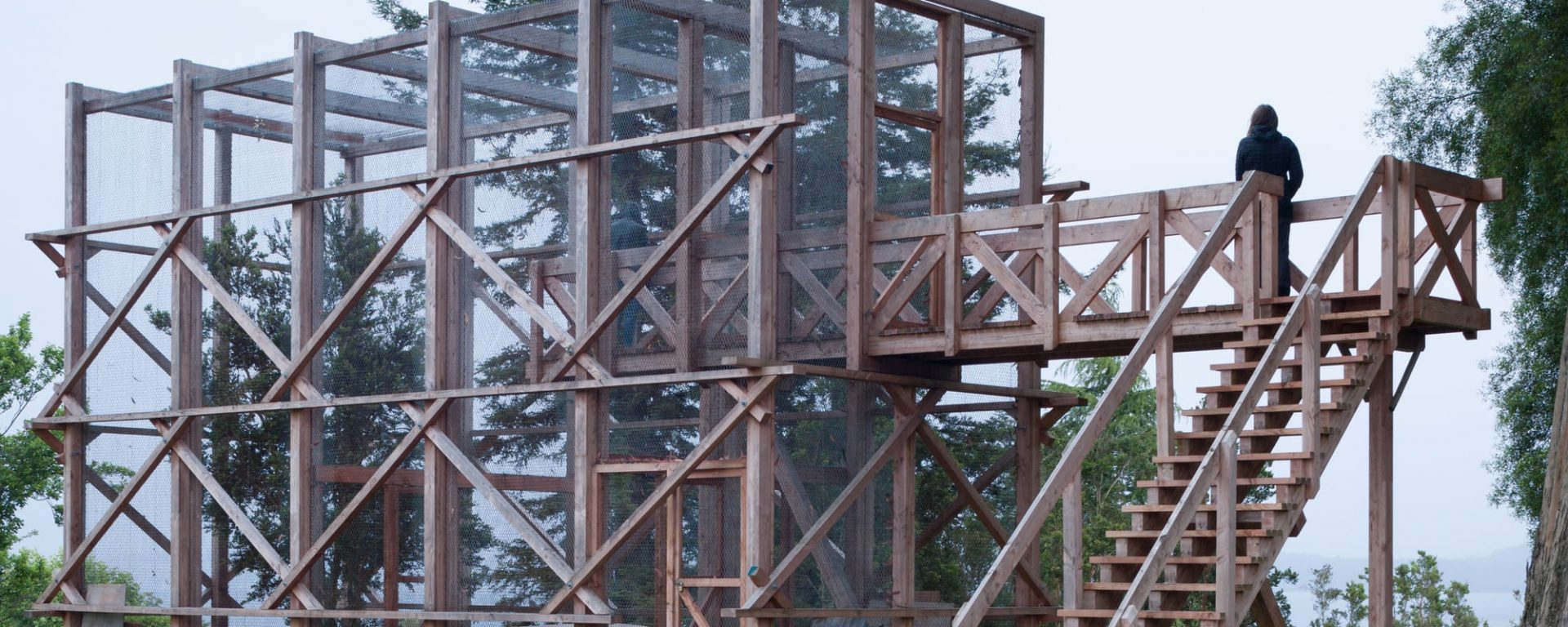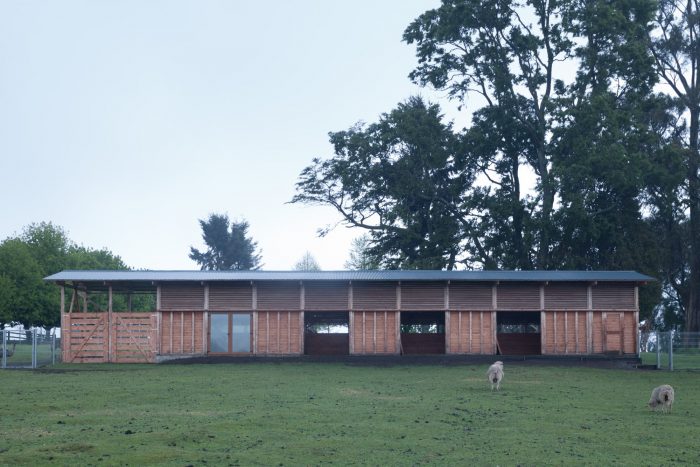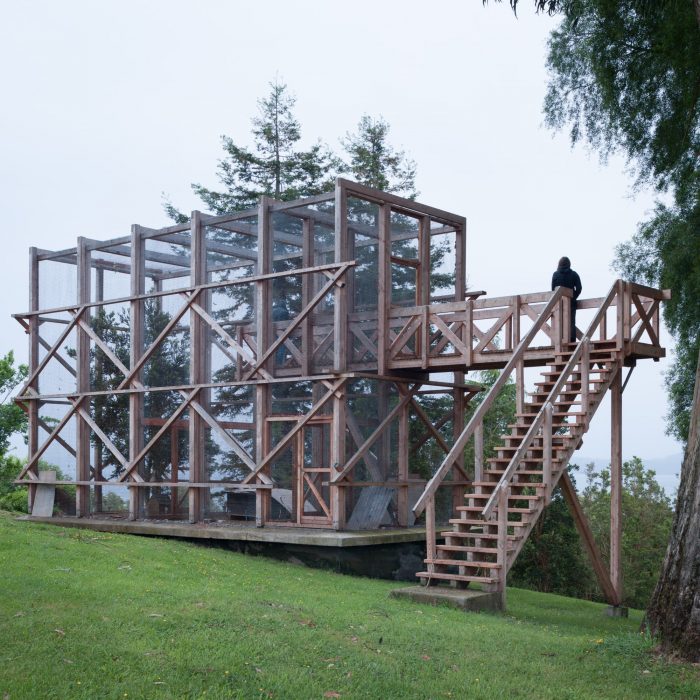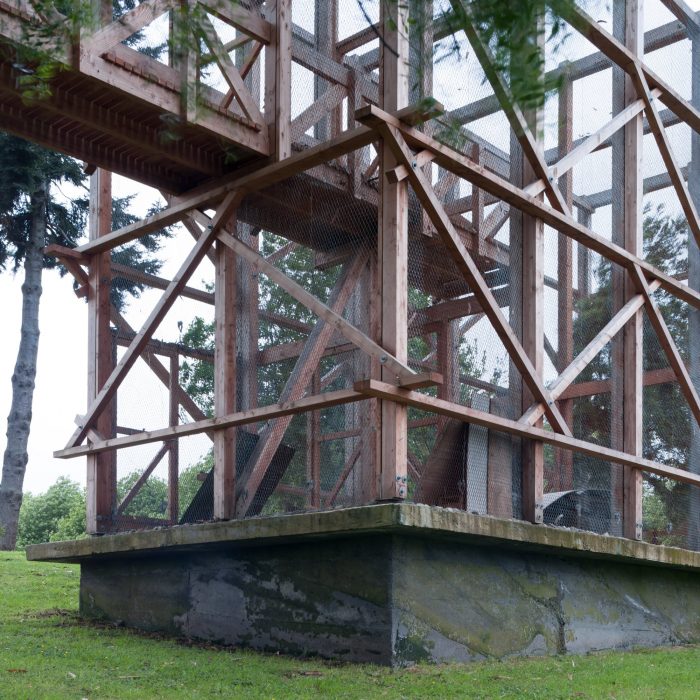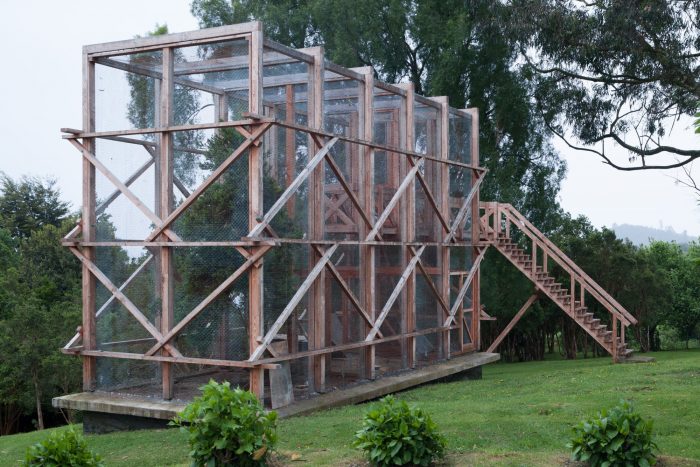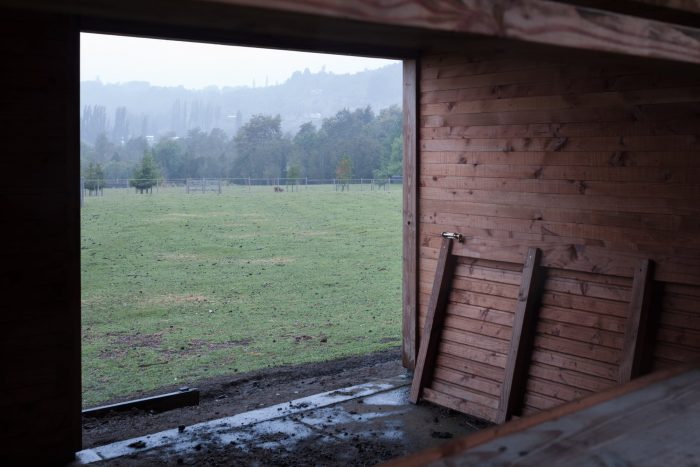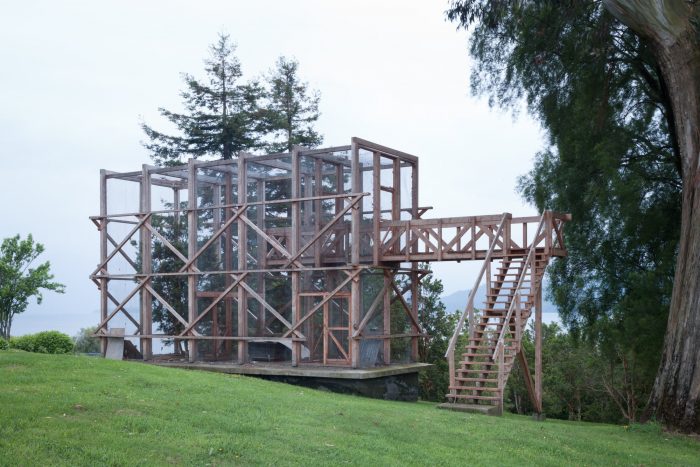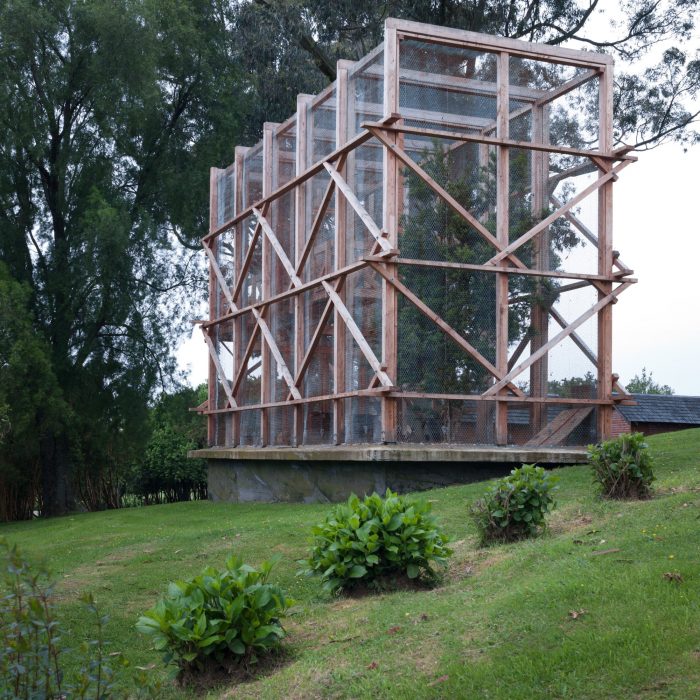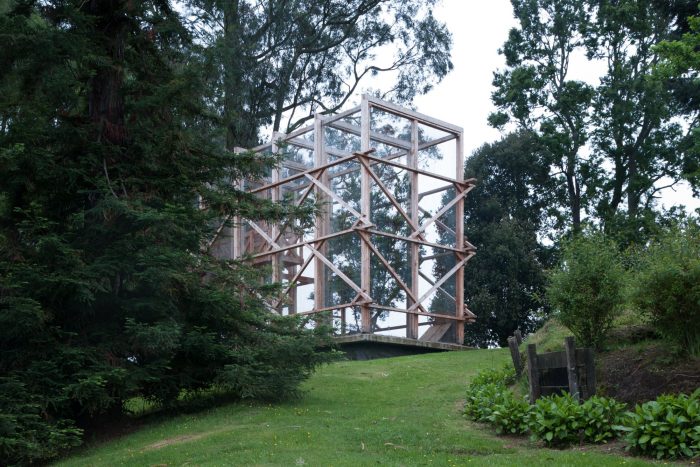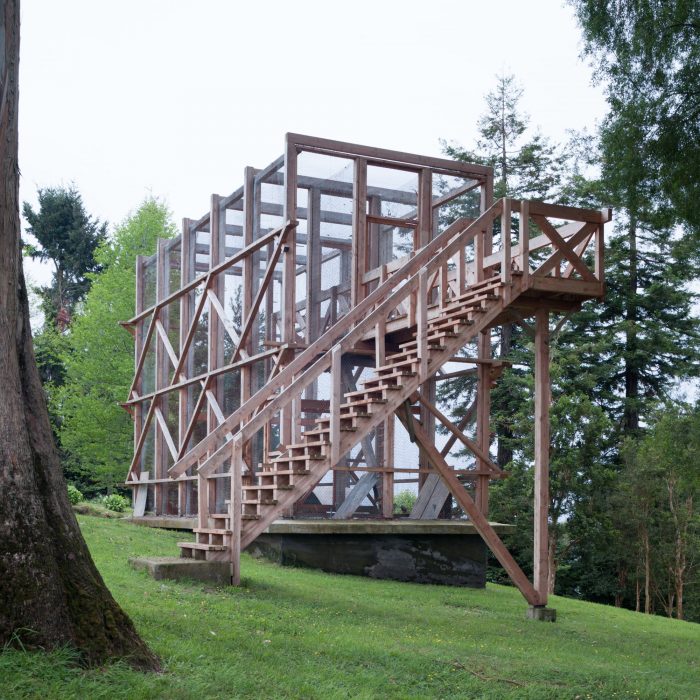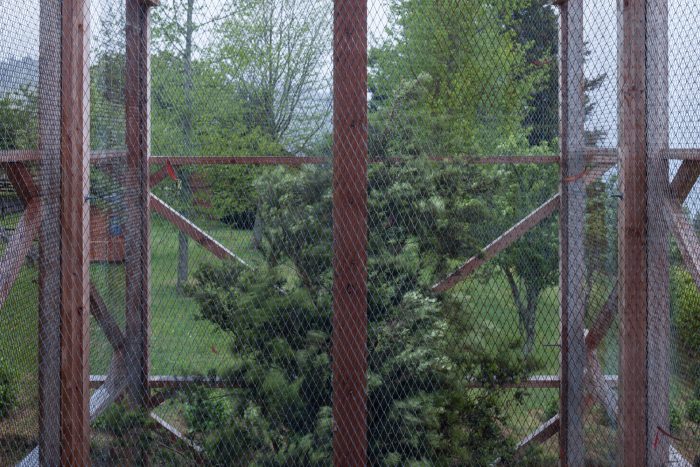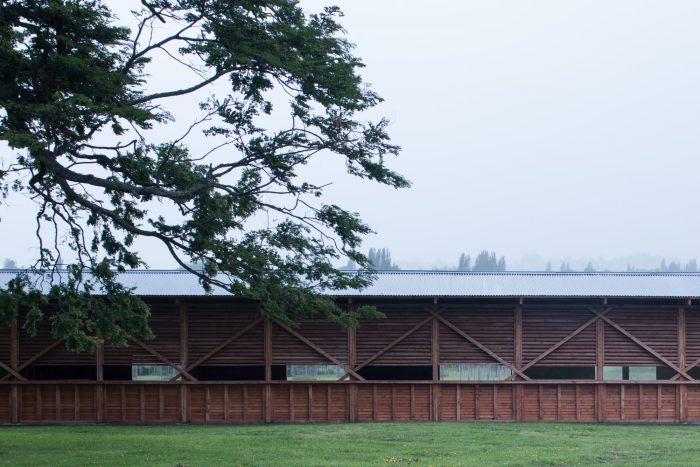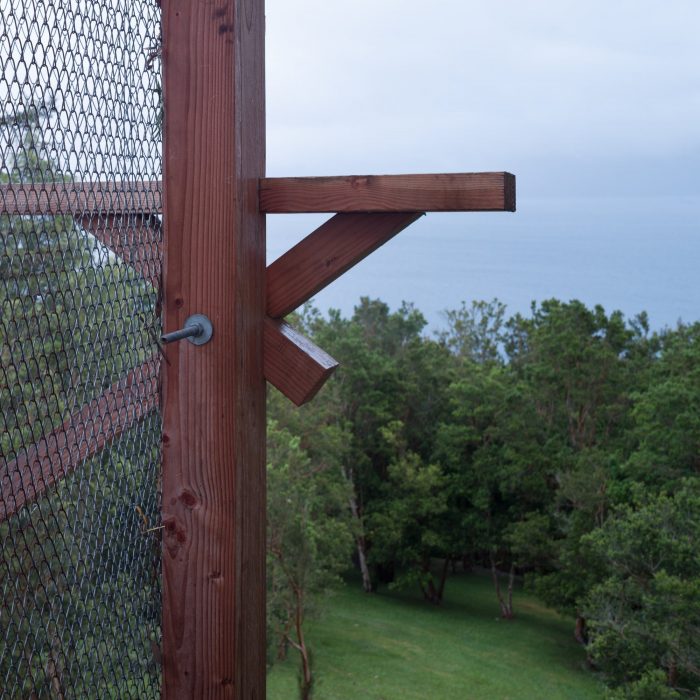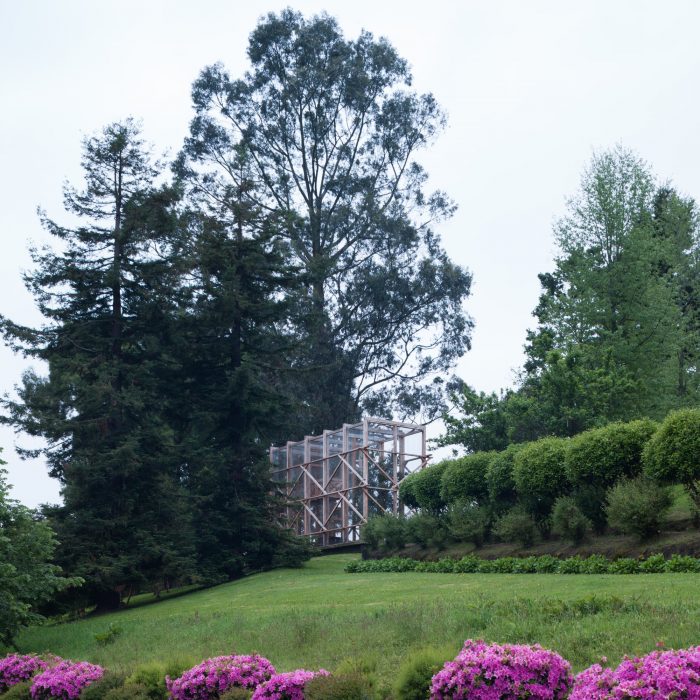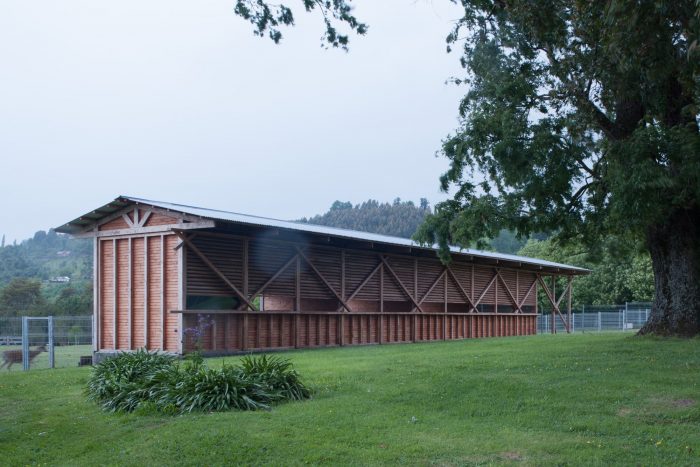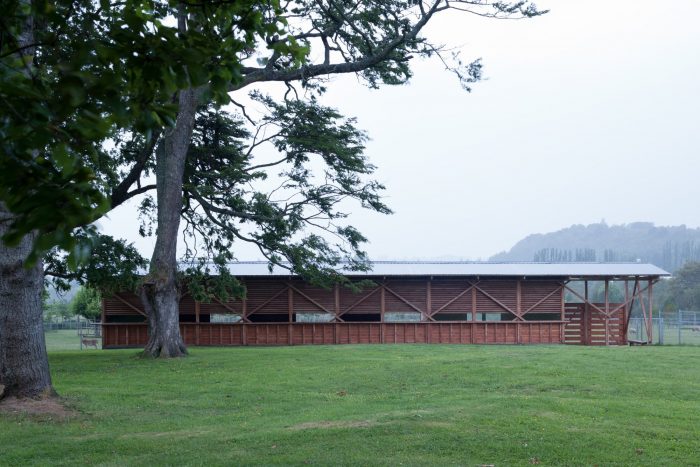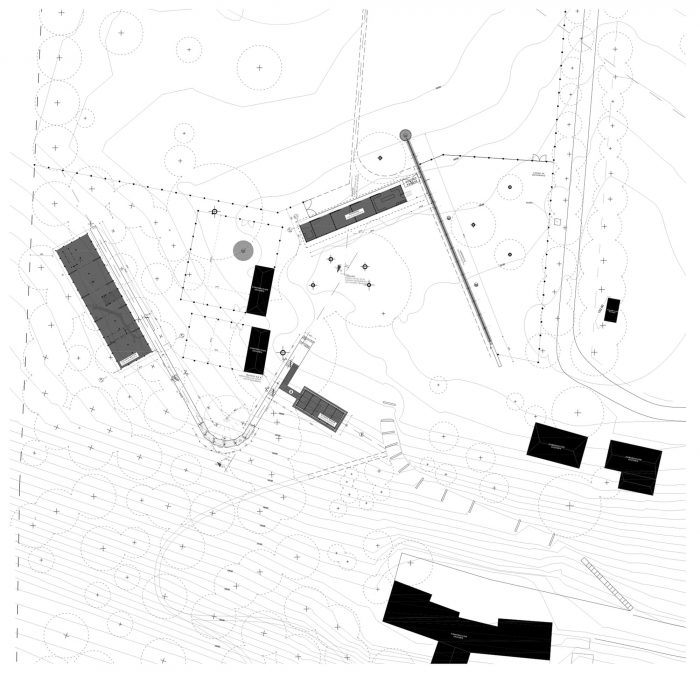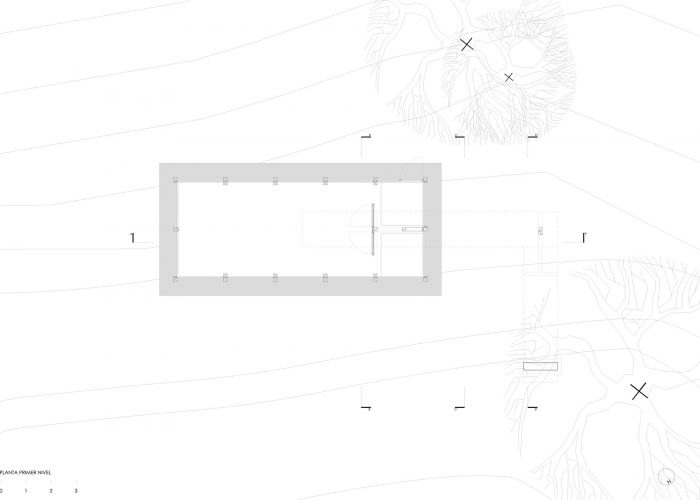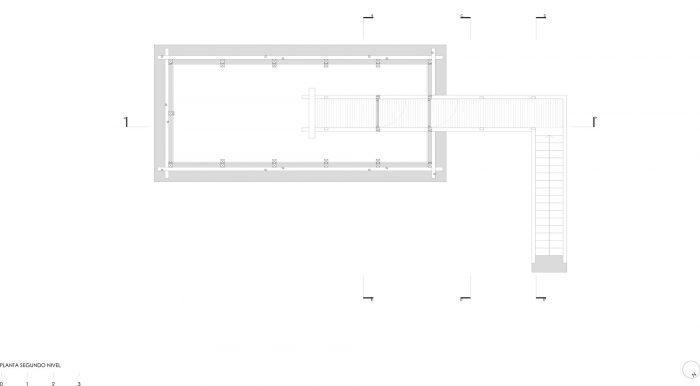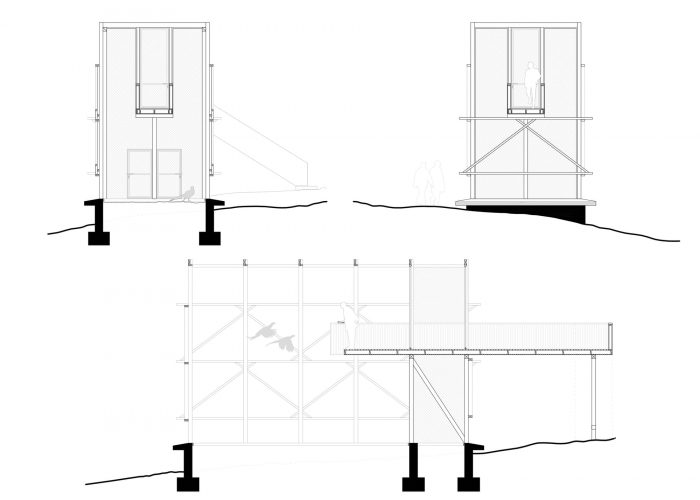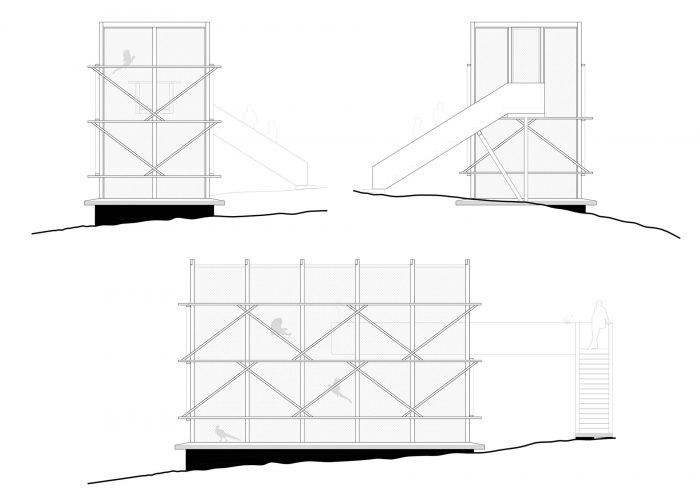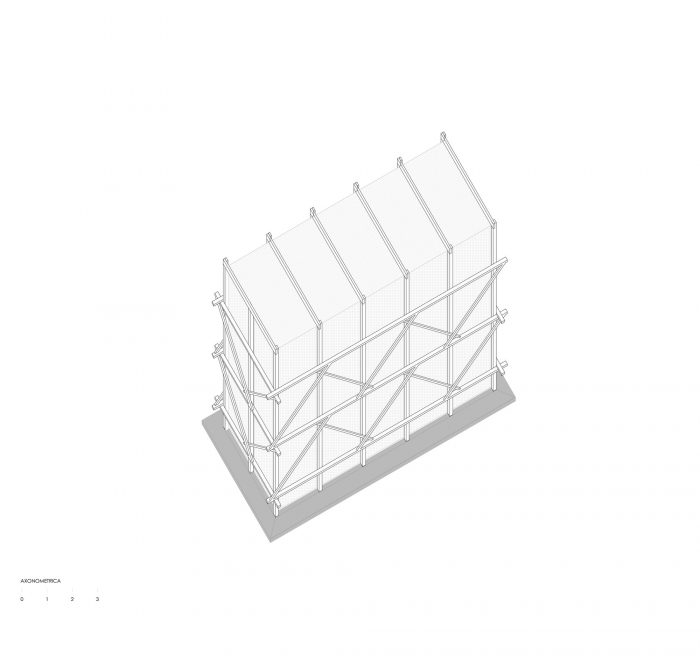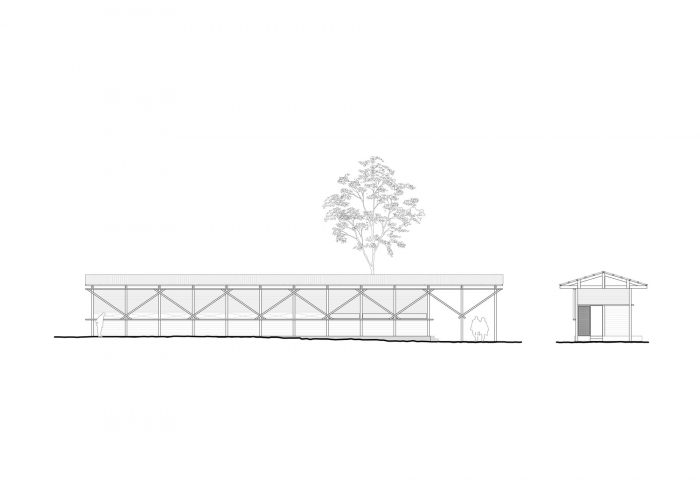应景观设计办公室DEL RIO SUR的邀请,我们被要求为Rupanco湖北面的动物公园提出总体规划和装置,这是一个可以看到各种地理标志的原始农村。
Following an invitation from the landscaping office DEL RIO SUR we were asked to propose a masterplan and installations for an animal Park in the north side of the Rupanco Lake, a pristine rural location with views to various geographical landmarks.
这个想法提出了分离的区域,动物们可以自由漫步,而其他区域则需要人类的互动,如喂食、被动沉思或兽医协助。
The idea proposed separated areas where the animals could freely wander to others where human interaction was required, such as feeding, passive contemplation or veterinarian assistance.
不同展馆的建筑表达是一项研究的结果,其中视觉的统一性主要是由建筑系统提供的,而不仅仅是由材料或风格。木材数字切割系统是一种预制技术,考虑到离城市中心的距离和合格工艺的稀缺,我们选择了这种技术。调查以Berndt和Hilla Becher的农村摄影档案为基础,发现他们对结构系统特别感兴趣,鉴于梁、柱和对角线等同时存在的木材元素的厚度,结点必须从一个点展开。我们称这种结为移位连接。
The architectural expression of the different pavilions is the result of a research where the visual unity is mainly provided by the building system more than just by material or style. The wood digital cut system is a prefab technology and given the distance to urban centres and scarce qualified workmanship was chosen. The investigation was based in Berndt and Hilla Becher’s photographic rural archives finding particular interest in structural systems where the knot had to be spread from a single point given the thickness of the concurring timber elements such as beams, pillars and diagonals. We called this knot a displaced joint.
预计的展馆包括两个鸟舍、一个马厩、一座桥、观察塔以及其他补充元素,如栅栏和集水器,将及时建造。首先要建造的是。
The pavilions projected consist of two aviaries, a stable, a bridge, observations towers among other complementary elements such as fences and water collectors to be built in time. The first ones to be built are:
小型鸟舍
对于一定数量的鸟类,大约10×4和7米高的鸟舍建在一个混凝土基座上,以稳定斜坡上的结构。高度是一个主要的因素,因为它需要纳入的物种需要从一个完整的Arrayan树被容纳在里面。结构上的挑战要求在立面的中央部分有双层对角线的位移接头,因为在顶部的下部和上部必须允许自由进出,那里有一个观察桥允许更高的视野。
The minor aviary
For a given number of birds, the roughly 10×4 and 7 metres high aviary is built on top of a concrete base which stabilises the structure in the slope. Height is a major factor as it was required for the species incorporated which needed from a full Arrayan tree to be contained inside. The structural challenge demands for a double layer of diagonals of displaced joints specified in the central part of the façade, as free access had to be granted in the top lower and upper parts, where an observation bridge permits for higher views.
鹿场
公园的通道亭子里有鹿厩和一个观察和储存室。这个战略位置分割和组织了公园的不同围场和路径。
结构上也是以类似的方式解决的,移位的连接处采用了长长的立面框架,包含通风百叶窗和双倾斜屋顶。
整个木材安装过程是由两个人的团队完成的,由一名主管工程师在10分钟内指导,没有留下任何剩余材料、废物或对土地或动物的重大损害。
Deer stable
The access pavilion of the park holds the deer stables and an observation and storing room. This strategic location splits and organises the different paddocks and pathways of the park.
Structurally is solved in the similar way with the displaced joint taking the long façade frame incorporating ventilation louvres and a double inclination roof.
The whole timber mounting process was done by a team of two people directed by a supervisor engineer in 10, without leaving any remaining materials, waste or major damage to the land or animals.
Architects: DRAA
Area : 2045 ft²
Year : 2019
Photographs :Felipe Camus
Design Team : Nicolas del Rio, Felipe Camus
Engineering : Enzo Valladares
Landscape : Martín del Río, Del Río Sur proyectos de paisaje.
Consultants : Timber S.A.
Collaborators : Magdalena Besomi, Linda Lanzavecchia
Country : Chile

